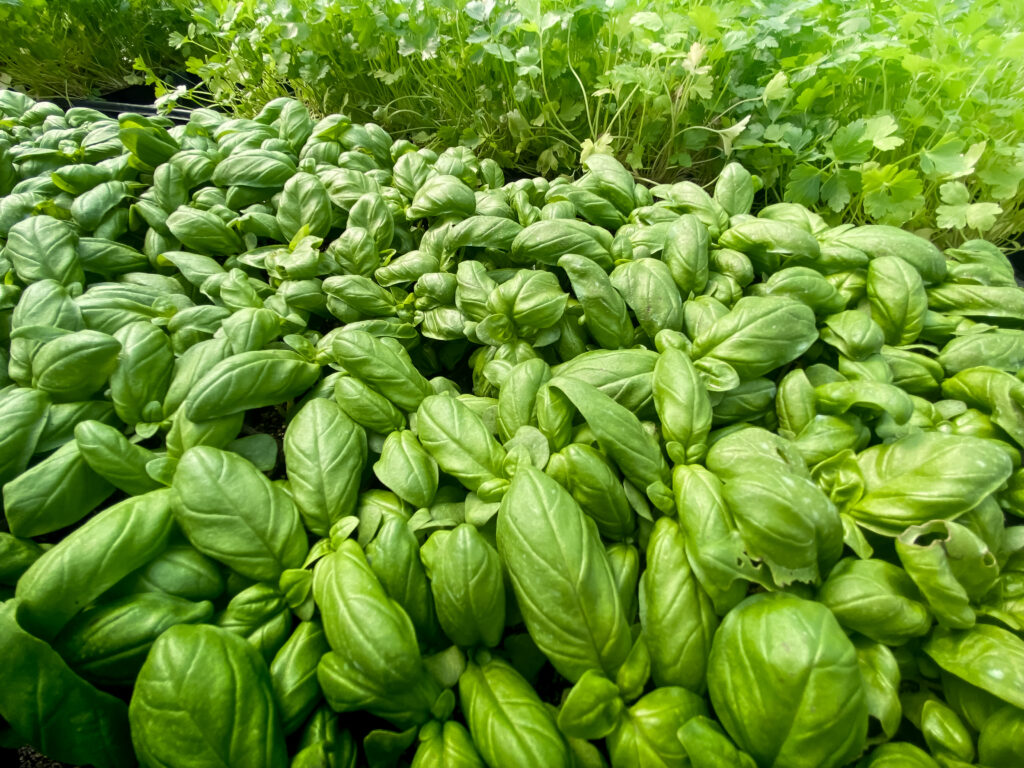Summary: A study on Genovese basil (Ocimum basilicum L.) was conducted to evaluate the effects of various treatments on its bioavailability in agricultural systems. The results showed that the combined application of vegetable protein hydrolysate (VPH), free Cu, Cu complexed with peptides and amino acids of vegetal origin (Cu and Cu-VPH), and a combination of VPH and Cu-VPH (VPH+Cu-VPH) led to a significant average increase of 16.3% in fresh yield compared to the untreated control and Cu treatment. This was supported by improved photosynthetic performance in ACO2 (+29%) and Fv/Fm (+7%). Mineral analysis using ICP OES showed that Cu and Cu-VPH treatments resulted in an average increase of 15.1-, 16.9-, and 1.9-fold in Cu in plant tissues compared to control, VPH, and VPH+Cu-VPH treatments, respectively. However, the VPH+Cu-VPH treatment induced the highest contents of other analyzed ions, except for P. This improved the photosynthetic efficiency and carboxylation capacity of the plants, resulting in improved physiological and productive performance. The results also highlighted an interaction between Cu and VPH, paving the way for the combined use of Cu and biostimulants to optimize agronomic interventions.
Publication: Frontiers in Plant Science









